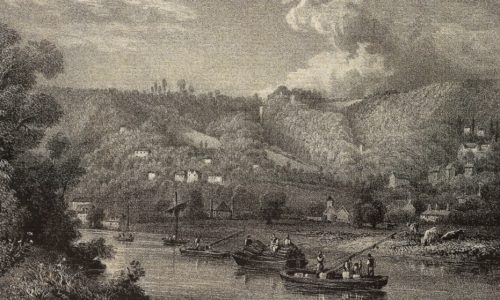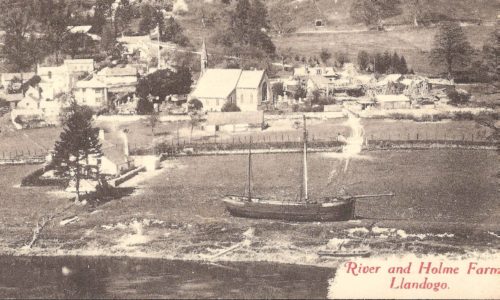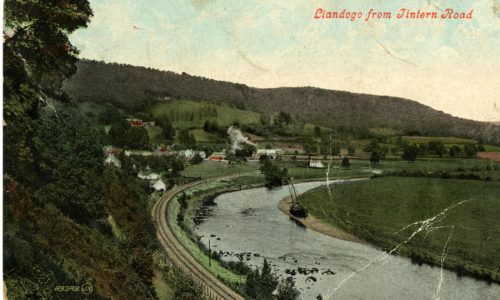There twice a day the Severn fills,
The salt seawater passes by
And hushes half the babbling Wye,
And makes a silence in the hills.
Tennyson, 1833


Trows laden with timber passing Llandogo church
The Wye is still tidal at Llandogo making it the highest village on the river that large sea-going trows could easily reach. On a good spring tide a trow of 50 tons could navigate here. Trows were the life blood of the village and between the 1780s and the 1860s twenty-eight ships, trows and barges were owned by Llandogo families, including the Good Hope, the Hannah Louisa, the Eagle and the George and Mary. The regular trip for Llandogo’s watermen was down the Wye, across the Severn and up the River Avon to Bristol. Here cargoes were unloaded at the ‘Welsh Back’ wharf (where you could always find a boat back to Wales), beside a pub called the Llandoger Trow.


The river was the focus of life in Llandogo. Boats were built and sails repaired on the riverside, women sang as they cleaned the oak bark waiting to be shipped, and the watermen and bow hauliers whiled away time in the waterside inns. From the quayside nimble footed donkeys carried goods up a maze of steps to cottages high above the river. Take The Wordsworth Walk around Llandogo and it’s not hard to imagine the trows moored along the quayside, the river dotted with sails and the watermen’s favourite watering hole, the Ship Inn, full of characters of ill repute, waiting for the tide. It was a way of life killed off when the railway arrived, although some trows were adapted to become seagoing vessels. The last Sea Captain of trows out of Llandogo was Alfred Fryer Washbourn Williams who was born in The Sloop in 1877 and followed the family tradition of sea faring. When he died in 1953 he was buried in St. Oudoceus churchyard alongside generations of river men. The bell of the last Llandogo trow, the William & Sarah, now hangs inside the church.

